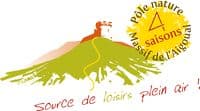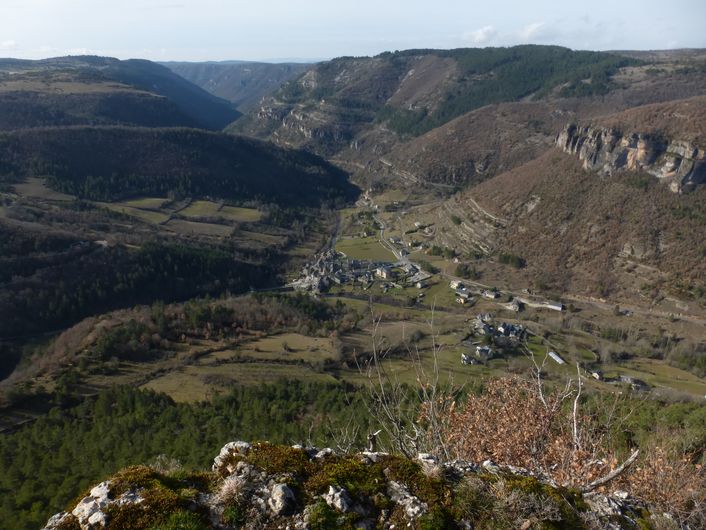
5 points of interest
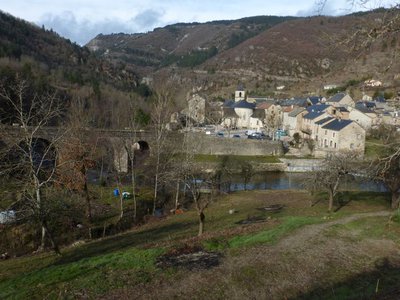
Trèves - nathalie.thomas  History
HistoryTreves
In Antiquity, the village square was a cemetery. The name Trèves is believed to derive from the Gaulish trebo – meaning 'village' according to some sources or the Celtic water goddess according to others – or perhaps from trivium, crossroads... The track going over the Roman bridge at Le Trévezel, restored in the 18th century, was in fact an important road in Antiquity. There is another hypothesis if you consult Boissier de Sauvages' 1820 dictionary, in whose opinion Treva or Trebo are Occitan words referring to phantoms or spirits. You might well be tempted by this version once you know the history of the Pas de Joulié cave described below! (B. Mathieu)
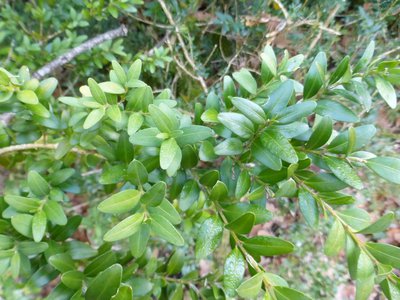
Buis - © Nathalie Thomas  Know-how
Know-howBox (Buxus)
Boxwood and humans: a long relationship! When livestock farming increased, the primeval oak forest opened up and box – which is too hard for sheep's teeth – took hold everywhere. Humans discovered one of its major qualities: broken up and scattered over the ground as a litter, it protects vegetable seedlings from drought and frost. Its leaves can make up for a lack of straw for fertilising arable land. In 1818, a decree issued by the prefect of the Gard department worried about the excessive clearing of box groves and the messy manner in which they were being uprooted, without adequate tools. Until about 1910, you might see mules laden with enormous bundles of box; then chemistry took over. (B. Mathieu)
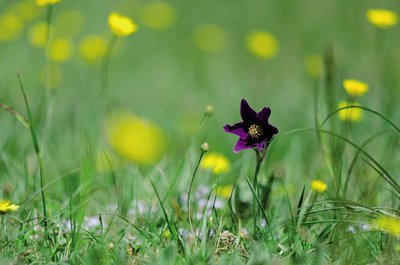
Anémone pulsatille - © Olivier Prohin  Natural environment
Natural environmentTypical grasslands on limestone soil
This small area of grassland is one of the rare open spaces on the Causse de Canayère. It is of interest for the preservation of certain flower species, especially the pasqueflower and several varieties of orchid. To counteract the natural progression towards more closed environments, this site is maintained by regular mowing.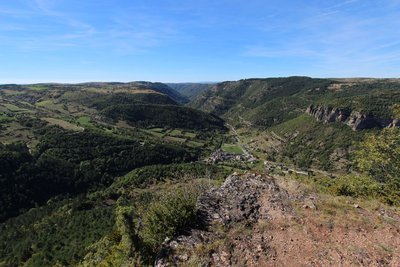
© Valère Marsaudon  Geology
GeologyOpen-sky geology
The granite and schist (slate) that constitute the bedrock of the Cévennes and Causses were created in the Paleozoic. The bedrock was then flattened by erosion and covered by the sea, leading to limestone deposits. On the reliefs, erosion has eliminated the sedimentary top layer while in zones of subsidence, such as the Causses, the limestone deposits remained in place. Since then, waterways have cut ever deeper into the limestone, and continue to do so today.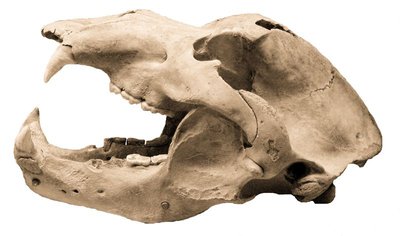
Crâne d'ours - © M. Delor  Archaeology
ArchaeologyJoulie Cave
In March 1952, Jolly, a forestry official, showed his friend Frayssignes this cave. Deposited in it they discovered the remains of 300 humans from the Neolithic, who had been carefully laid out side by side. The cave was rapidly declared a historical monument. In the depths of the cave, a great number of bear bones was also found. This cave bear, the ancestor of our brown bear (Ursus spelaeus), had a skull 50 cm long! In the winter, groups of these bears would have huddled together in clay wallows at the rear of the caves. Ursus artos succeeded the cave bear and was succeeded in turn by the brown bear, which was hunted to extinction in the 15th century. (B. Mathieu)
Forecast
Altimetric profile
Information desks
Tourism & national parc'house
Col de la Serreyrède, 30570 Val d'Aigoual
The Maison de l'Aigoual houses the tourism office Mont Aigoual Causses Cévennes and the Maison du Parc national. This visitor centre provides information on and raises awareness of the Cévennes National Park, its sites and events as well as the rules that must be observed in the National Park's central zone.
On site: changing exhibitions, video projections, Festival Nature events and shop Open year-round
Calculateur d'itinéraire Lio
Utilisez le calculateur liO pour organiser votre trajet en région Occitanie.
Autres régions
Calculez votre itinéraire en Auvergne Rhône Alpes sur Oùra
Biodiversité autour de l'itinéraire
Source
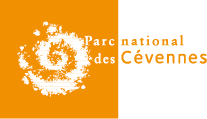
Report a problem or an error
If you have found an error on this page or if you have noticed any problems during your hike, please report them to us here:


